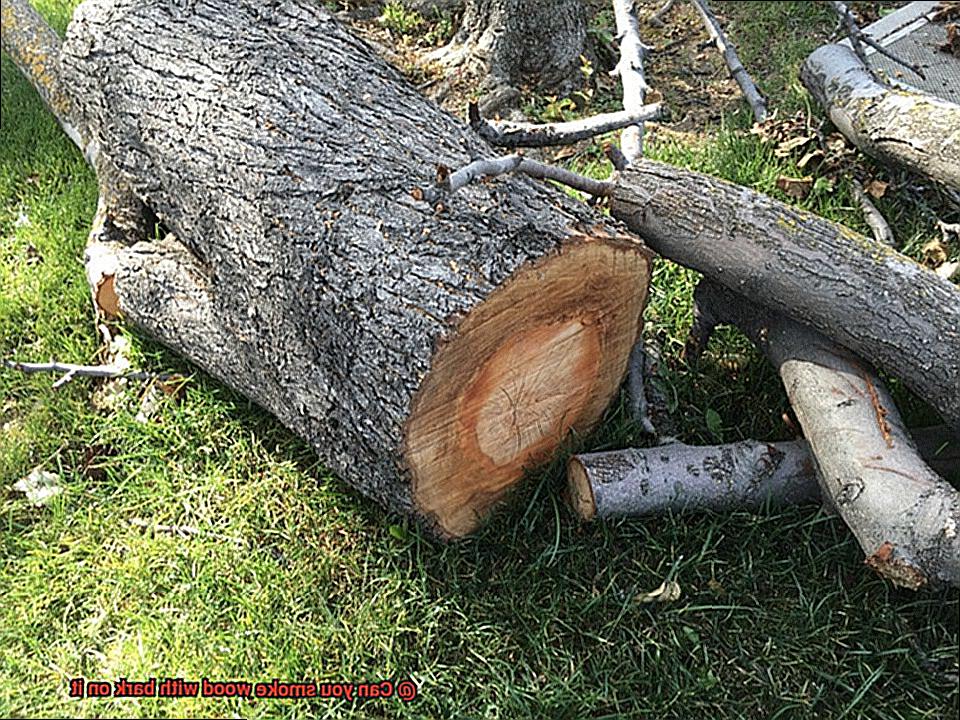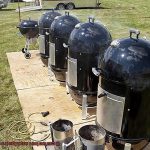Smoking wood has been an age-old technique to infuse a rich flavor into your food. Whether you’re barbecuing meats or grilling vegetables, smoking wood can add that extra oomph to your dishes. But when it comes to using wood with bark on it, things can get a little hazy. So, let’s address the burning question – Can you smoke wood with bark on it?
As a grill master, you know that every small detail counts in creating the perfect dish. Using wood with bark on it can offer some benefits like adding an additional layer of flavor and retaining moisture in your food. However, some experts argue that removing the bark from the wood before smoking is a better approach. So which side should you take?
In this article, we’ll dive deep into the topic of smoking wood with bark on it. We’ll weigh the pros and cons of using bark on your smoking wood and provide you with essential tips to elevate your food game. Whether you’re just starting or have years of experience under your belt, we’ve got everything you need to know about smoking wood with bark on it right here.
Contents
What is Smoking Wood?
Smoking wood is a crucial element in the art of smoking meat, fish, or other foods, adding flavor and aroma to the final product. It is the type of wood used that can make a significant difference in taste and aroma, making it a vital consideration for any smoking enthusiast.
There are various types of smoking woods available for grilling and smoking, each with its unique flavor and aroma that can complement different types of meat or fish. For instance, hickory wood is known for its strong flavor and is often used for smoking beef or pork, while applewood is mild and sweet and is commonly used for smoking chicken or fish. Other popular smoking woods include mesquite, oak, cherrywood, and many more.
However, selecting the right smoking wood is not enough to achieve optimal results. You must ensure that it is dry and well-seasoned to burn efficiently, producing less smoke than wet or green wood. Green wood contains too much moisture, leading to excessive smoke production and resulting in a bitter taste in the final product.
One common question that arises when using smoking wood is whether you can smoke wood with bark on it. The answer is yes, but there are a few things to keep in mind when doing so. Some types of bark can produce a bitter taste when burned, especially conifers and eucalyptus. Therefore, if you plan on using bark-on wood, it’s crucial to do your research and choose the right type of wood for the job.
Another factor to consider when using wood with bark on it is that leaving the bark on can cause it to burn hotter and faster than if the bark was removed. This can be both good and bad depending on what you’re trying to achieve. If you’re looking for a quick cook time, leaving the bark on could be beneficial. However, if you’re trying to achieve a slower cook time or a more subtle smoky flavor, removing the bark might be a better option.
Finally, leaving the bark on the wood can cause more ash buildup in your smoker or grill. This can be problematic if you’re trying to maintain consistent temperatures or if you’re cooking something that doesn’t do well with ash falling onto it. In these cases, it might be better to remove the bark before smoking.
Can You Smoke Wood With Bark On It?
Well, the answer isn’t as simple as a straightforward yes or no. There are some pros and cons to consider before making a decision.
Firstly, leaving the bark on can add a unique flavor and aroma to your smoked meat or fish. The bark contains various substances that can enhance the taste of your dish, giving it that extra edge. Additionally, it can produce more smoke and ash, which some people find desirable for achieving that perfect smoky flavor.
However, there are also potential downsides to consider. Burning bark can produce a bitter taste that may not appeal to everyone’s taste buds. The bark may also contain dirt, insects, or other debris that could affect the quality of your food. Furthermore, burning wood with bark on it can make it more challenging to control your cooking temperature and maintain cleanliness in your grill or smoker.
So, what should you do? Ultimately, the decision comes down to personal preference and cooking style. If you decide to leave the bark on, be sure to choose high-quality wood free from contaminants or debris. Keep in mind the potential for a bitter taste and prepare for more ash buildup.
On the other hand, if you decide to remove the bark, take care to do so with a clean, sharp tool to avoid damaging the wood itself. This will help ensure safety and cleanliness in your cooking process.
Types of Trees Suitable for Smoking Wood with Bark On
Smoking meat is an art that requires the right tools, including the perfect wood to add that smoky flavor. But when it comes to smoking wood with bark on, the type of tree used can make a world of difference. Here are some types of trees that are suitable for smoking wood with bark on:
Hickory
Known for its strong and bold flavor, hickory is a favorite choice among pitmasters. The aroma and taste of hickory pairs well with pork, beef, and poultry.
Apple
Applewood is a popular choice for those who prefer a sweeter, milder taste. The fruity flavor of applewood complements pork and poultry perfectly.
Mesquite
Mesquite is a staple in Texas-style barbecue and is known for its strong, smoky flavor. It’s perfect for beef lovers as it adds a unique flavor to brisket and other beef cuts.
Cherry
With its sweet and fruity flavor, cherrywood is a versatile option that pairs well with pork, chicken, and fish. It adds a beautiful reddish hue to your meats as well.
Oak
Oakwood is a go-to for many pitmasters as it has a mild flavor that works well with almost any type of meat. It’s also great for longer smoking sessions as it burns slowly.
It’s crucial to note that not all types of trees are safe for smoking with bark on. Cedar, pine, and redwood contain toxins that can be harmful when burned. Always stick to hardwoods like those listed above.
Pros and Cons of Smoking Wood with Bark On
The type of wood you use can make or break your masterpiece. This brings us to the topic of smoking wood with bark on it. It’s a topic that has caused debates among grill enthusiasts for years. Some argue that it adds a unique flavor to the meat, while others claim it can be harmful to one’s health. In this section, we’ll explore the pros and cons of smoking wood with bark on it, so you can make an informed decision.
Let’s start with the pros. Smoking wood with bark on it can add a unique flavor to the meat that cannot be achieved by using barkless wood. The tannins in the bark can add a sweet and smoky flavor that enhances the taste of your meat. Additionally, leaving the bark on the wood protects it from insects, fungus, and other harmful organisms. The bark acts as a natural barrier and saves time and effort as there is no need to remove it before smoking.
However, there are also cons to consider. The bark on the wood can contain harmful chemicals such as pesticides, herbicides, and other toxins that may be released into the smoke. These chemicals can be harmful to one’s health. Moreover, the bark can cause an uneven burn which results in inconsistent smoke and temperature, ultimately affecting the quality of your meat. Furthermore, the bark can cause ash buildup in your smoker, making it difficult to control the temperature and resulting in a dirty smoker.
To summarize, smoking wood with bark on it has its advantages and disadvantages. It’s important to carefully weigh these factors before deciding whether or not to use it. If you do choose to use it, make sure to source your wood from a reputable supplier who uses sustainable harvesting methods and avoids using pesticides or other harmful chemicals.
How to Choose the Right Type of Wood for the Job
Smoking meat is an art form that requires choosing the right type of wood to achieve the perfect flavor profile. When smoking wood with bark on it, there are a few things to keep in mind to ensure that you’re selecting the best wood for the job. Here are five sub-sections to consider when choosing the right type of wood for smoking with bark on it.
Select the Right Hardwood
Choosing the right hardwood is crucial when smoking with bark on it. It’s essential to use hardwoods like oak, hickory, mesquite, or fruitwoods such as apple or cherry, while avoiding softwoods like pine or cedar. Softwoods contain high levels of resin that can produce unpleasant flavors and aromas when burned. By selecting the right hardwood, you’ll be able to enhance the natural flavor of your food.
Moisture Content is Key
The moisture content of the wood is critical when smoking with bark on it. Wet or green wood should be avoided as it can produce excessive smoke and creosote buildup in your smoker. You should aim for dry wood with a moisture content between 15-20%. This will help ensure that the wood burns evenly and produces a consistent smoke flavor.
Size and Shape Matter
The size and shape of the wood you choose can also affect your smoking experience. Small chips or chunks are ideal for shorter smoking sessions, while larger logs may be better suited for longer cooks. Additionally, make sure to inspect the wood before using it to ensure there is no mold or rot present that could affect the flavor and quality of the smoke.
Flavor Profile
Different types of wood impart different flavors when smoked, so it’s important to choose a wood that complements the meat or vegetables being smoked. For example, oak is an excellent all-purpose wood that imparts a mild smoky flavor, while hickory has a stronger, more distinct flavor that pairs well with beef and pork. By selecting the right type of wood, you’ll be able to achieve the desired flavor profile.
Be Mindful of Ash Buildup
Leaving the bark on the wood can cause more ash buildup in your smoker or grill. This can be problematic if you’re trying to maintain consistent temperatures or if you’re cooking something that doesn’t do well with ash falling onto it (such as fish). In these cases, it might be better to remove the bark before smoking.
How to Remove the Bark from Wood before Smoking
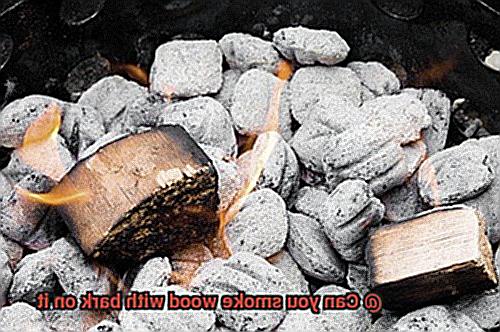
Smoking meat or vegetables with the right type of wood can elevate the flavor and quality of your food. However, removing the bark from the wood before smoking is just as crucial to ensure a successful grilling experience. Bark can contain dirt, insects, and debris that can ruin the taste of the food or even pose health risks. Furthermore, bark can produce excess smoke and cause flare-ups in the grill. In this article, we’ll explore the different methods for removing bark from wood before smoking.
Choosing the Right Type of Wood
Before diving into how to remove bark from wood, it’s essential to choose the proper type of wood for smoking. Hardwoods like oak, hickory, and maple are popular choices because they provide a strong, smoky flavor. On the other hand, fruitwoods like apple and cherry have thinner bark that can be left on without affecting the taste of the smoke.
Methods for Removing Bark
There are several ways to remove bark from wood before smoking. The easiest and most efficient method is to use a wire brush. Simply run the wire brush along the length of the wood, applying enough pressure to remove the bark but not damage the wood itself. This method works well for all types of wood and is highly recommended for removing bark.
Another way to remove bark is using a sharp knife to scrape it off. Begin by making a small incision in the bark and then gently slide the knife along the surface of the wood. This method can be time-consuming but is effective for smaller pieces of wood.
Alternatively, you can soak the wood in water overnight to loosen the bark and make it easier to remove. Once soaked, use a wire brush or rough sponge to scrub away the bark. This method is best for larger pieces of wood and can be quicker than using a knife.
Tips for Removing Bark
Before removing bark using any method, make sure that the wood is dry. Wet wood can be challenging to handle and may not produce as much smoke as dry wood. Once the bark is removed, allow the wood to dry completely before using it for smoking.
It’s worth noting that some types of wood are easier to remove bark from than others. Hickory and mesquite can have tough bark that requires more effort to remove, while fruitwoods like apple and cherry tend to have softer bark that can be removed more easily.
Conclusion
Tips for Maintaining Consistent Temperatures When Smoking With Bark On
Smoking meat is an art form that requires patience, skill, and the right equipment. When using wood with bark on it, achieving consistent temperatures can be challenging, but fear not. Here are five tips to help you maintain perfect temperatures when smoking with bark on.
Choose the Right Wood
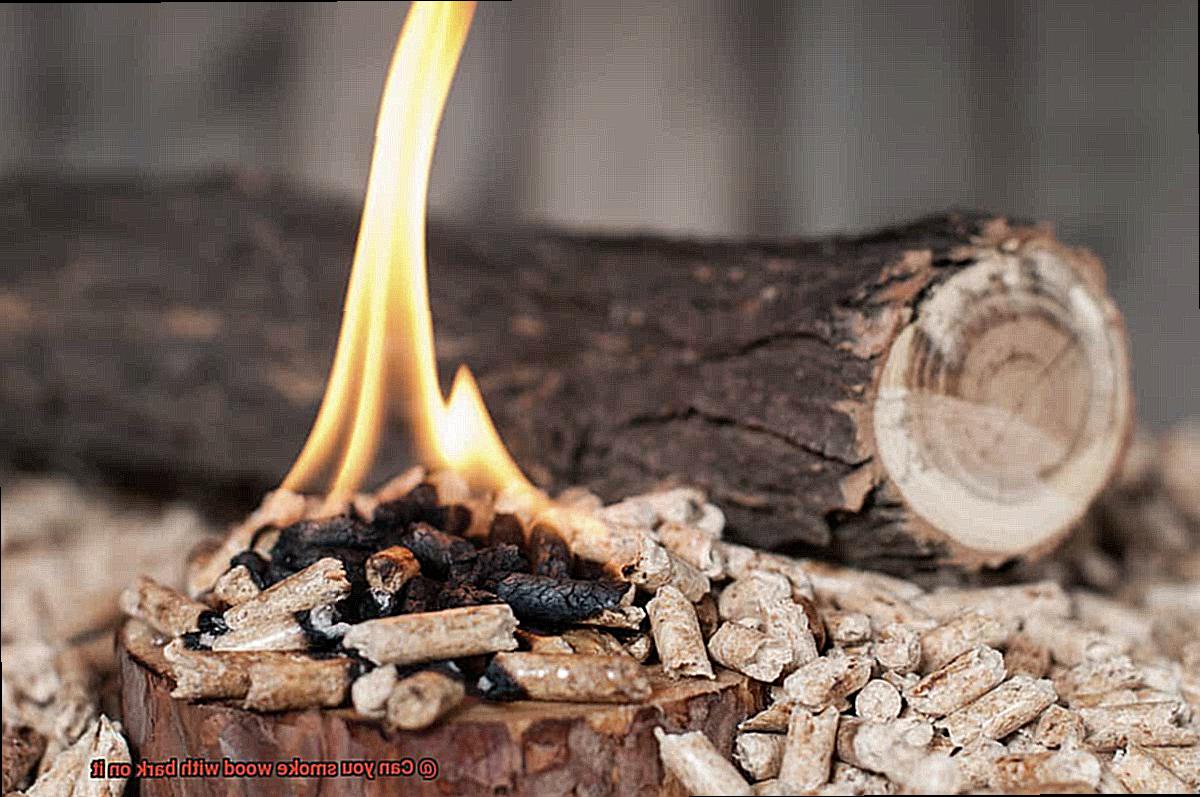
Choosing the right kind of wood is crucial when smoking with bark on. Hardwoods like hickory, oak, and mesquite have a thick bark layer that helps protect the wood from burning too quickly. This means that they will burn more slowly and consistently, making it easier to maintain the desired temperature.
Set Up Your Smoker Properly
Properly setting up your smoker or grill is essential for maintaining consistent temperatures. Make sure you have enough fuel and adjust the vents to allow proper airflow. Use a thermometer to monitor the temperature regularly, especially when starting, to ensure that it stays within the desired range.
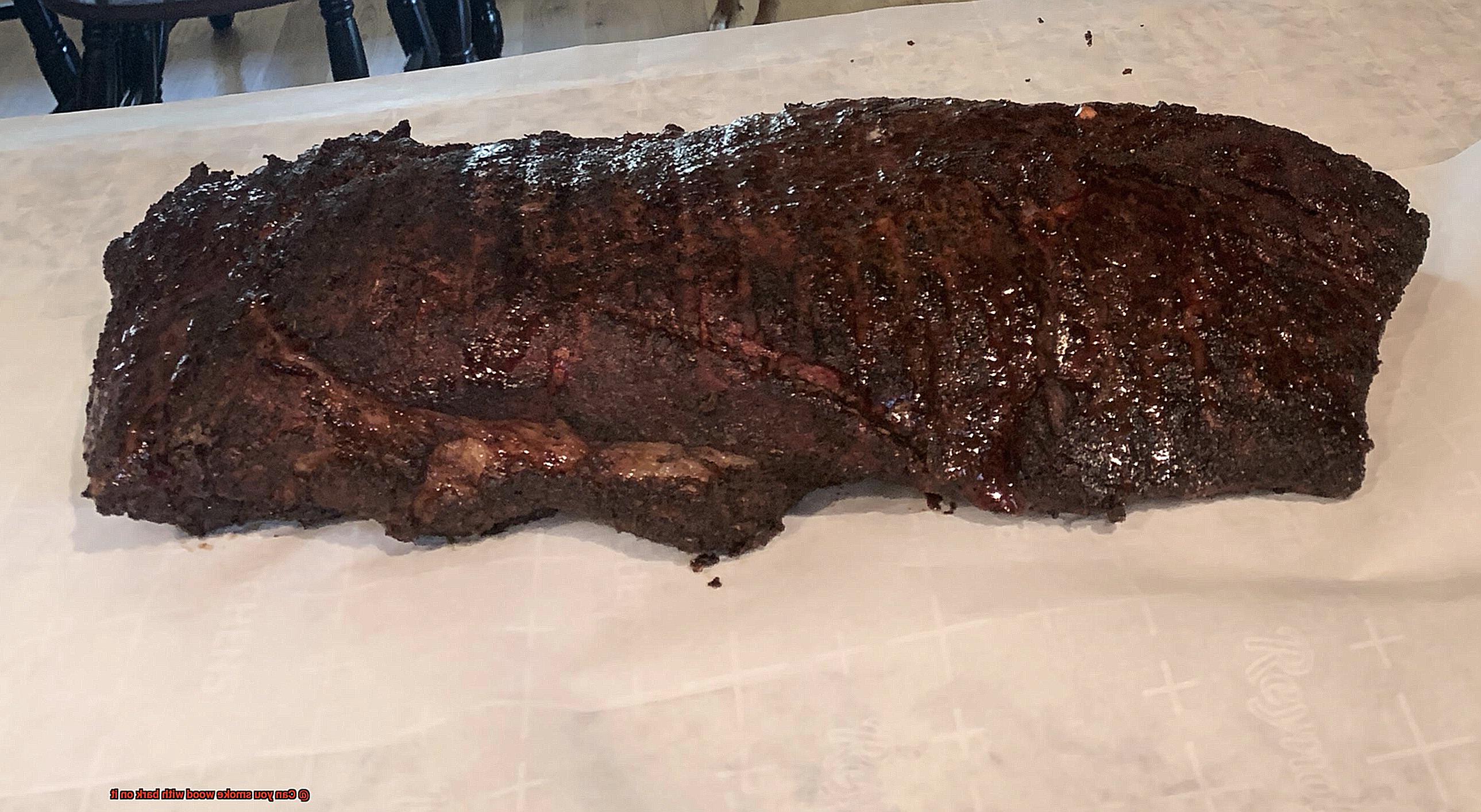
Use a Water Pan
Using a water pan is an effective way to regulate temperature when smoking with bark on. The water in the pan absorbs heat and releases it slowly, helping to prevent sudden temperature spikes. This results in a more consistent temperature throughout the cooking process.
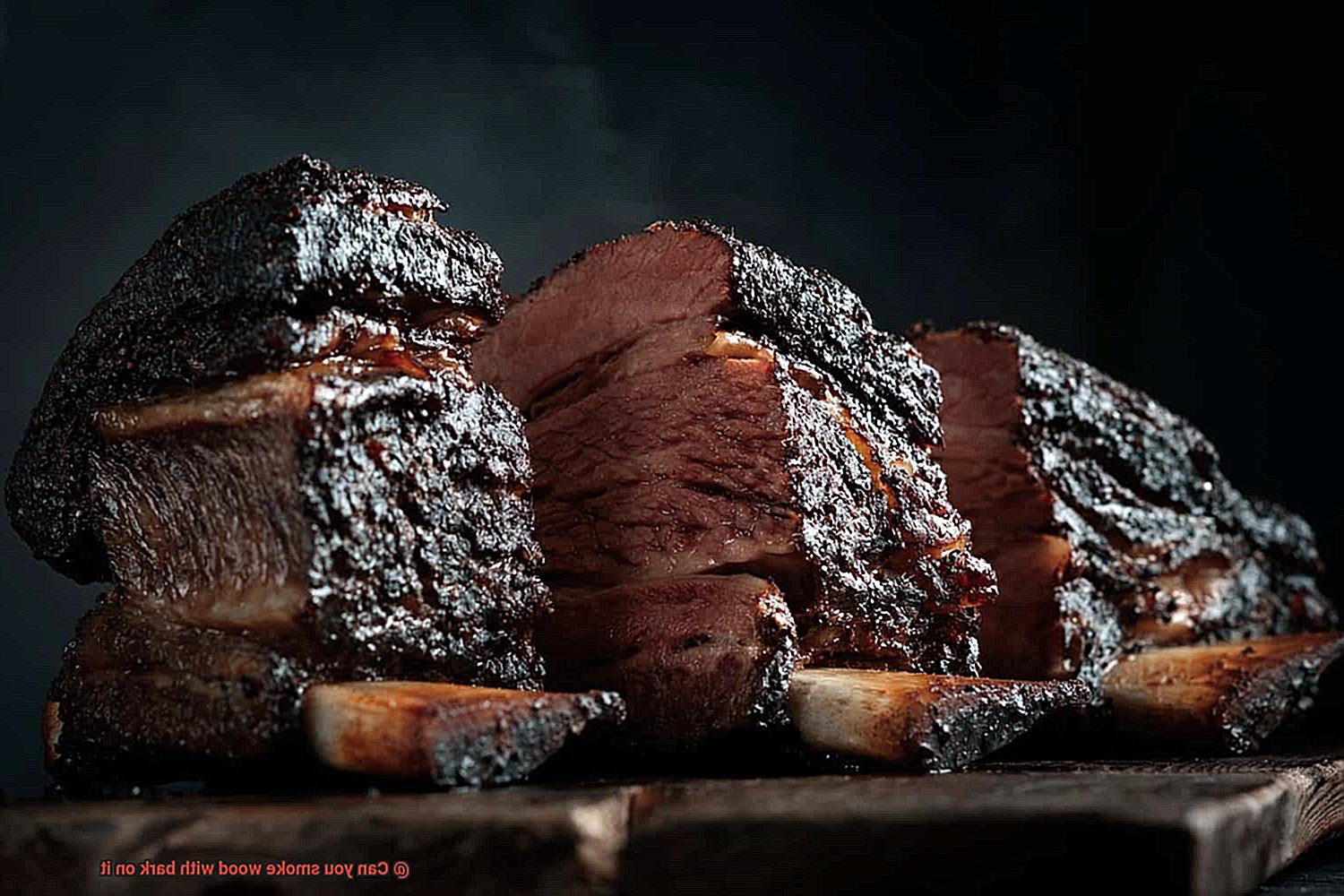
Avoid Opening the Smoker Frequently
Opening the smoker frequently can cause fluctuations in temperature due to loss of heat and smoke. Instead, use a thermometer to monitor the temperature inside the smoker and make adjustments as necessary. This will help maintain a consistent cooking environment for your meat.
Use Small Pieces of Wood
Using small pieces of wood will help ensure even burning and prevent too much smoke from being produced. This will reduce temperature fluctuations caused by excess smoke. It will also make it easier to maintain consistent temperatures throughout the smoking process.
Dealing with Ash Buildup in Your Smoker or Grill When Using Barked Wood
Don’t worry, there are simple solutions to this problem that can enhance your smoking and grilling game.
Firstly, regular cleaning is essential. Proper maintenance, including removing any ash buildup from the bottom of the smoker or grill and cleaning out any ash from the firebox, can help maintain consistent temperature control and prevent ash buildup. Remember, a clean smoker or grill is a happy smoker or grill.
Secondly, try using a charcoal basket or firebox to contain the barked wood and prevent it from touching the bottom of the smoker or grill. This not only reduces ash accumulation but also makes cleanup much easier.
Lastly, using a drip pan under the meat can help catch any excess drippings and prevent them from mixing with the ash. This not only keeps your smoker or grill cleaner but also enhances the flavor of your meat by preventing unwanted taste interference.
PIXUQxUSGug” >
Conclusion
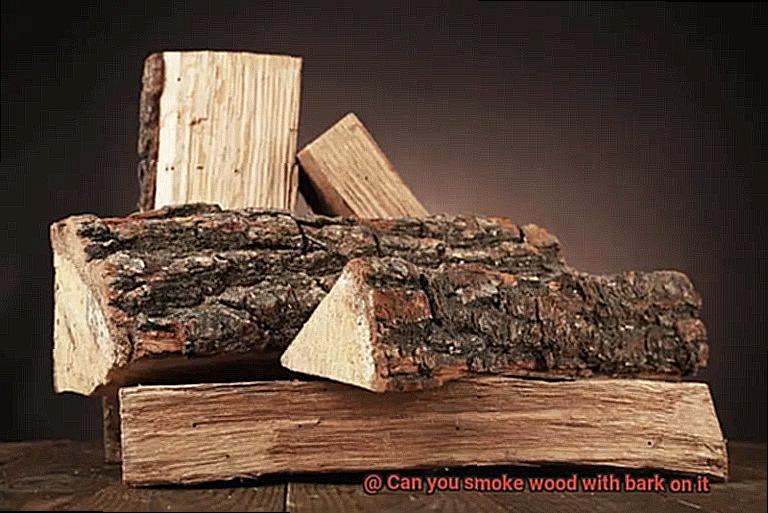
In conclusion, smoking wood with bark on it can be a game-changer for your barbecue game. Not only can it add an extra layer of flavor to your food and retain moisture, but it also looks rustic and authentic. However, there are potential downsides to consider before you light up that bark.
The type of bark can produce a bitter taste when burned, which is why it’s crucial to choose the right kind of wood. Hardwoods like oak, hickory, mesquite or fruitwoods such as apple or cherry are excellent choices while avoiding softwoods like pine or cedar at all costs.
Leaving the bark on can cause more ash buildup in your smoker or grill. But fret not. Regular cleaning and using a charcoal basket or firebox will help manage this issue.
Maintaining consistent temperatures when smoking with bark on can be challenging; however, choosing the right kind of wood and setting up your smoker properly can help. Using a water pan and avoiding opening the smoker frequently can also help regulate temperature.
If you decide to leave the bark on, be sure to choose high-quality wood free from contaminants or debris. On the other hand, if you decide to remove the bark, take care to do so with a clean, sharp tool to avoid damaging the wood itself.
In essence, smoking with bark on is entirely possible if done correctly.

